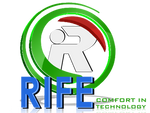Self-Service Kiosks for Hospitals: Patient Check-In & Registration
Certainly! Here’s a structured page for Self-Service Kiosks for Hospitals: Patient Check-In & Registration with no links, ready for you to copy:
Self-Service Kiosks for Hospitals: Patient Check-In & Registration

Overview
Patient check-in and registration kiosks are digital self-service stations designed to streamline the arrival process at hospitals and clinics. These kiosks allow patients to independently register, update information, and complete necessary forms, improving efficiency and reducing wait times.
Key Features
-
Self-Registration: Patients can register themselves by entering personal details, verifying identity through ID cards, face recognition, or biometrics, and updating demographic or insurance information.
-
Appointment Check-In: Patients confirm or schedule appointments, reducing manual paperwork and queue congestion.
-
Electronic Forms: Consent forms, health questionnaires, and other documentation can be completed and signed digitally on the kiosk.
-
Payment Processing: Kiosks accept copayments and outstanding balances via secure, integrated payment systems, including touchless options.
-
Integration with Hospital Systems: All data entered is synced in real-time with the hospital’s information system, ensuring accuracy and accessibility for healthcare providers.
-
Wayfinding: Some kiosks provide directions to waiting areas or specific departments, improving patient navigation within the facility.
-
Language Support: Multi-language interfaces enhance accessibility for diverse patient populations.
Benefits
-
Reduced Waiting Times: Automating check-in cuts patient wait times significantly, often from over an hour to just minutes.
-
Improved Data Accuracy: Direct patient data entry reduces errors from manual transcription and ensures complete, legible records.
-
Enhanced Patient Experience: Patients enjoy a faster, more convenient process, with less time spent in queues and greater privacy.
-
Efficient Resource Utilization: Administrative staff are freed from repetitive data entry tasks and can focus on more critical patient needs.
-
Secure and Compliant: Kiosks offer secure data handling, protecting sensitive patient information and ensuring compliance with healthcare regulations.
How It Works
-
Arrival: Patient approaches the kiosk.
-
Identification: Patient scans ID or enters personal details; biometric or facial recognition may be used.
-
Registration/Check-In: Patient confirms or updates information, completes forms, and checks in for their appointment.
-
Payment: If required, copays or outstanding balances are paid directly at the kiosk.
-
Directions: Kiosk provides wayfinding instructions or prints a confirmation slip.
-
Data Sync: All information is securely transmitted to the hospital’s information system in real time.
Success Metrics
-
Average patient waiting time reduced to under 7 minutes.
-
Transaction times as low as 3 minutes per registration.
-
High patient adoption rates, with tens of thousands of registrations completed via kiosks.
Conclusion
Self-service check-in and registration kiosks transform the patient intake process, delivering faster service, greater accuracy, and a better overall hospital experience.
